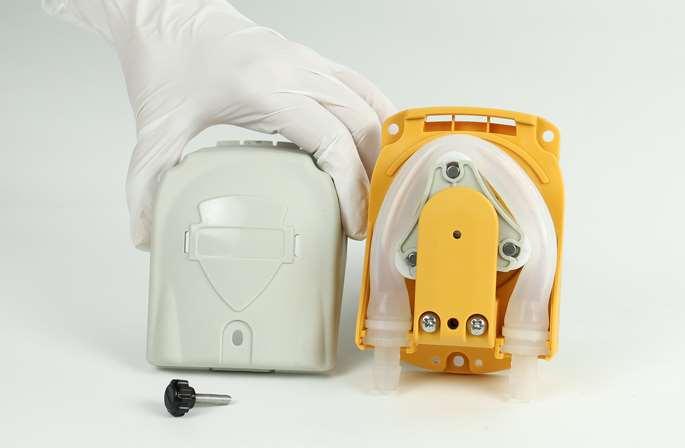Can a Peristaltic Pump Still Transfer Liquid After the Pump Tube Ruptures?

Can a Peristaltic Pump Still Transfer Liquid After the Pump Tube Ruptures?
A rupture in a peristaltic pump tube will affect its ability to transfer liquid. The more severe the rupture, the weaker its liquid transfer capability, and it may even become impossible to transfer liquid normally.
I. Introduction to Peristaltic Pumps
Peristaltic pumps are a type of pump that uses the compression and peristalsis of an elastic pump tube against the pump body to suck in and discharge materials. They are suitable for conveying viscous, fragile, and suspended solid-containing liquids or gas-liquid mixtures. Their characteristics include precise flow rate, stable pressure, good pump body sealing, no contamination of the conveyed material, and smooth operation.
II. Peristaltic Pump Tube Rupture Scenarios
The pump tube of a peristaltic pump is a vulnerable component, often rupturing due to factors such as tube aging, material quality, and the operating environment. The severity of the tube rupture varies and generally includes:
1. Small Holes and Micro-Cracks: Localized small holes or micro-cracks appear in the pump tube. These will not affect the overall transfer efficiency, but the pump tube needs to be replaced promptly.
2. Large Cracks and Fractures: Large cracks or complete breaks appear in the pump tube. These will affect the normal operation of the pump, and the pump tube needs to be replaced promptly.
III. Impact of Peristaltic Pump Tube Rupture
The working principle of a peristaltic pump involves the movement of internal structures within the pump body, causing deformation of the tube wall to achieve the suction and discharge of materials. When the pump tube ruptures, leading to liquid leakage, it will affect the pump's suction and discharge capacity and may even cause interruption of the process and affect the safe operation of the equipment. At the same time, liquid can enter the inside of the pump body, leading to pump damage and the need to replace the pump body.
IV. Conclusion
In summary, a rupture in a peristaltic pump tube will affect its ability to transfer liquid. The more severe the rupture, the weaker its liquid transfer capability, and it may even become impossible to transfer liquid normally. Therefore, it is essential to regularly inspect the condition of the pump tube and promptly replace aged or ruptured tubes to ensure the normal operation of the equipment. Additionally, during pump operation, attention should be paid to protecting the pump tube and avoiding accidental damage.
- Art
- Causes
- Crafts
- Dance
- Drinks
- Film
- Fitness
- Food
- Spellen
- Gardening
- Health
- Home
- Literature
- Music
- Networking
- Other
- Party
- Religion
- Shopping
- Sports
- Theater
- Wellness


